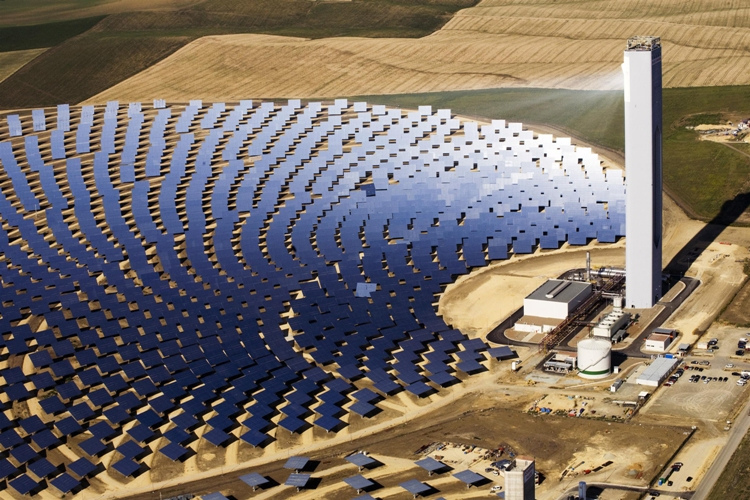Living near solar power plants is becoming more common all the time.
Fortunately with no noise, no moving parts, and no emissions, a few thousand solar panels can make an ideal neighbor.
Or maybe instead of the photovoltaic (solar electric) variety, you have a concentrating solar power plant in the neighborhood. These produce power in a different way, but we’ll get to that in a minute.
We’ll also take a look at the pros and cons of a solar plant and why it just might be a good idea to make solar power an integral part of our energy future.
First things first: What is a solar plant?
Though they can take many different forms and produce power through very different technologies, when all is said and done a solar plant is a very large solar installation.
How large?
A utility scale solar plant is usually considered any solar project or installation that is 1 megawatt or larger (It would take around 5000 solar electric panels to complete a 1 Megawatt solar installation!).
Since the space required to produce this much power with solar panels is about 4 to 8 acres, it rules out all but the largest of commercial or industrial rooftops.
This means that the vast majority of solar energy plants are not located on rooftops at all, but are instead ground-mounted in fields or other open areas. This is why solar power plants are often referred to as “solar farms”.
Now let’s take a look at the two main kinds of solar plant that we should be aware of:
- Utility Scale Photovoltaic Installations
Photovoltaic might seem like a rather intimidating word but it simply refers to solar panels that make electricity from sunlight. You’ve probably seen hundreds of photovoltaic or “PV” panels installed on houses and businesses and simply called them solar panels. If you took a rooftop solar panel installation, put it in a field, and multiplied the number of solar panels by a few thousand you would have a solar power plant. How large can these solar plants get? At this time the largest fully operational PV solar plant in the world is a 80 megawatt project in Sarnia, Canada which uses thin film solar panels by First Solar. This 950 acre solar farm should be able to meet the power needs of over twelve thousand homes.

- Concentrating Solar Power Plants
Rather than using solar panels to turn sunlight into electricity, concentrating solar power (CSP) concentrates a lot of sunlight onto a small area and heats up a fluid to power a steam turbine. The turbine then drives a generator and produces electricity. Two common types of these CSP installations are parabolic troughs (curved mirrors) and power towers. CSP plants are usually located in desert areas and there is even a proposal to use the sunlight in the Sahara Desert to provide power to Europe through concentrating solar power projects.
This all sounds pretty great, but you may be wondering about some of the disadvantages of using solar power plants to power our future.
One rather obvious thing to keep in mind is that solar energy can only produce electricity in the daytime when the sun is shining (although the power from CSP plants can be stored for the nighttime more easily than PV solar power).
The other disadvantage is that, unlike rooftop solar installations, solar plants take up space that could be used for other purposes like farming. This is one reason that former industrial sites that are not suitable for farming or homes are ideal locations for solar farms.
What are the advantages of solar energy plants?
For one thing, solar plants produce power in the daytime during “peak hours” when we need the most electricity for businesses and air conditioning. Using solar power to supply power during peak demand can eliminate the need for new coal-fired power plants.
Another advantage of solar plants is that they run on free fuel (the light of the sun). This means that once the plants are built there are no recurring fuel costs like you would have with a coal or natural gas plant.
All things considered, it would seem that solar power plants make good neighbors indeed.
